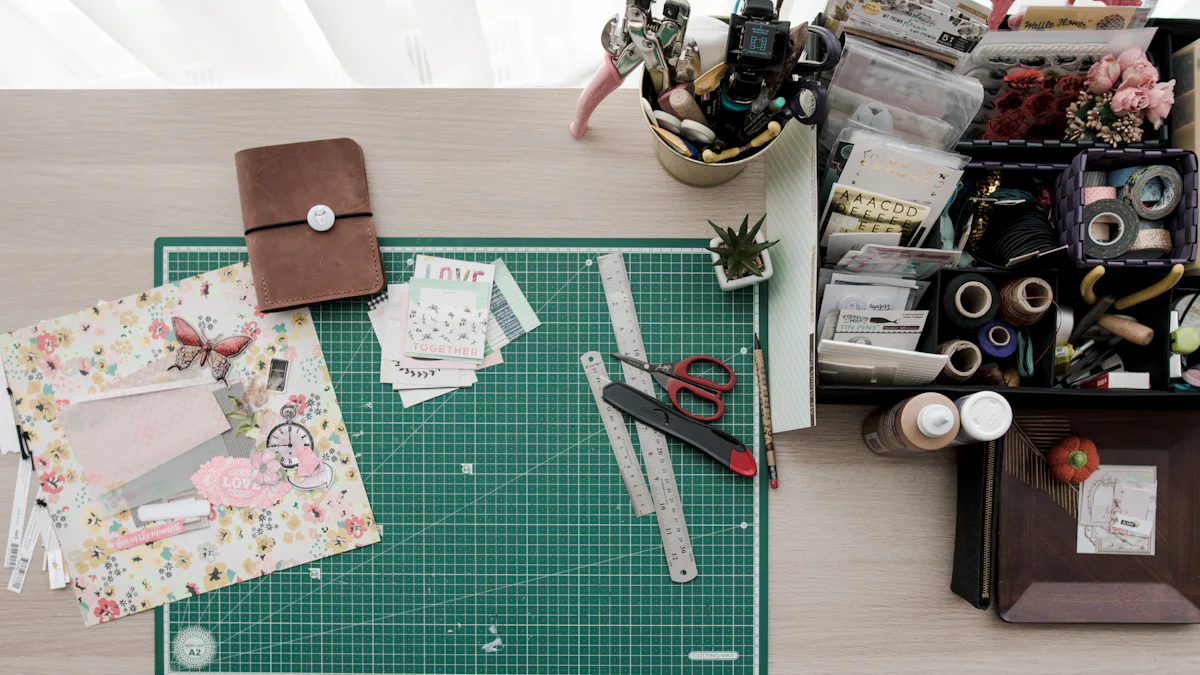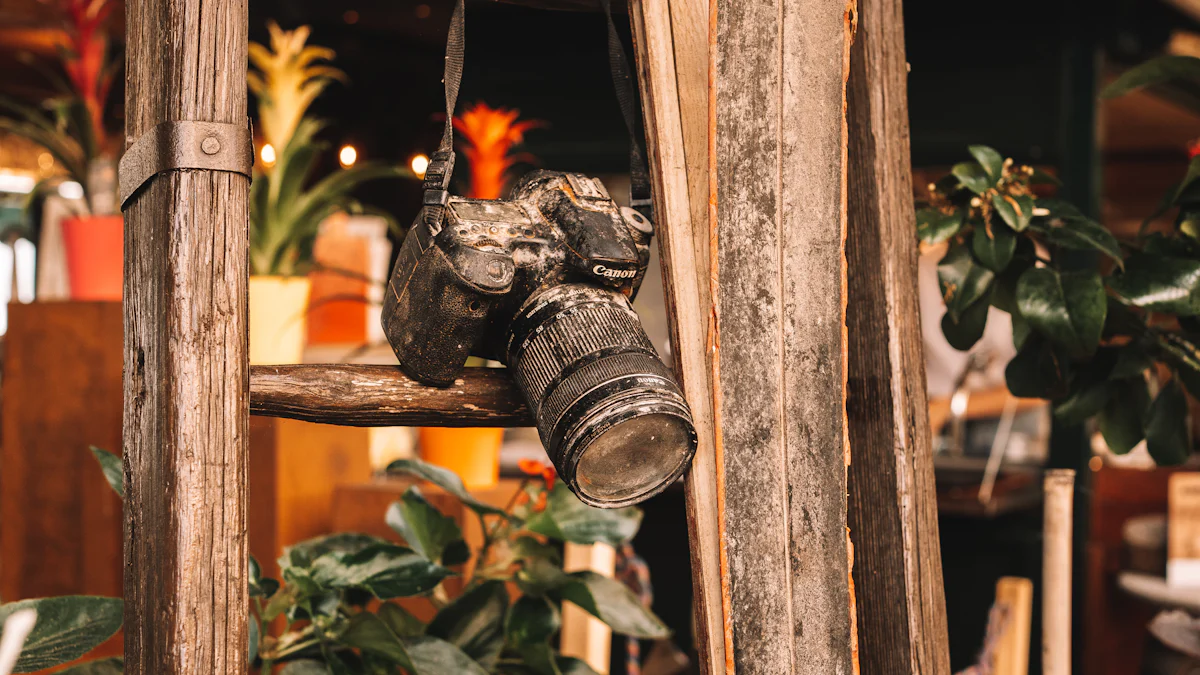Choosing the Right Stabilizer for Your Embroidery Projects

Choosing the right stabilizer transforms embroidery projects. Stabilizers ensure quality and durability on various fabrics. Many embroiderers face challenges like puckering or distortion. These issues often arise from incorrect stabilizer use. Understanding how to use different stabilizers for embroidery can make a huge difference. This blog will guide you through selecting the perfect stabilizer for your needs. Let's dive into the world of stabilizers and enhance your embroidery experience.
Understanding Stabilizers
What is a Stabilizer?
Definition and purpose
A stabilizer acts as a support system for embroidery projects. It provides a foundation that prevents fabric from shifting or stretching during stitching. This support ensures the design remains intact and looks professional. Stabilizers help maintain the fabric's shape, preventing puckering or distortion.
Types of stabilizers
Embroidery enthusiasts can choose from several types of stabilizers. Each type serves a unique purpose based on the project requirements. Here are the main types:
Tear-Away Stabilizers: These stabilizers provide temporary support. They work well with stable woven fabrics. After stitching, you can easily tear away the excess material.
Cut-Away Stabilizers: These offer permanent support. They suit stretchy fabrics like t-shirts. After embroidery, you trim away the excess stabilizer but leave some behind to maintain the design's integrity.
Water-Soluble Stabilizers: These dissolve in water. They are perfect for sheer fabrics or lace designs. Once the embroidery is complete, you rinse the fabric to remove the stabilizer.
Heat-Away Stabilizers: These vanish with heat. They work best for projects where water or tearing isn't ideal. A simple application of heat removes the stabilizer.
Why Stabilizers Matter
Impact on embroidery quality
Stabilizers play a crucial role in enhancing embroidery quality. They create a smooth barrier between the machine and fabric. This barrier prevents needle deflection, ensuring precise stitching. With the right stabilizer, embroidery projects achieve a professional finish.
Common issues without stabilizers
Skipping stabilizers can lead to several problems. Fabric may pucker or distort, ruining the design. Without stabilizers, stitches might pull at the fabric, causing gaps or misalignment. Stabilizers prevent these issues, making them essential for every embroidery project.
Types of Stabilizers

Tear-Away Stabilizers
Characteristics
Tear-away stabilizers offer temporary support for embroidery projects. These stabilizers are easy to remove, making them ideal for quick projects. The material feels firm and provides a solid base during stitching. After completing the embroidery, you can tear away the excess stabilizer without damaging the fabric.
Best uses
Tear-away stabilizers work best with stable woven fabrics. Projects like tablecloths or napkins benefit from these stabilizers. The temporary nature suits designs that don't require long-term support. Tear-away stabilizers provide a clean finish, leaving no residue behind.
Cut-Away Stabilizers
Characteristics
Cut-away stabilizers offer permanent support. The non-woven material ensures durability and stability. After stitching, the stabilizer remains under the fabric, maintaining the design's integrity. The material withstands washing and wearing, making it a reliable choice for many projects.
Best uses
Cut-away stabilizers suit stretchy fabrics like t-shirts or sweatshirts. These stabilizers prevent distortion in designs that experience frequent movement. The ongoing support helps maintain the shape of intricate patterns. Cut-away stabilizers ensure that embroidery looks professional over time.
Water-Soluble Stabilizers
Characteristics
Water-soluble stabilizers dissolve completely when exposed to water. The material feels soft and flexible, adapting to various fabric types. Once the embroidery is complete, a simple rinse removes the stabilizer. This feature makes it a unique choice for specific projects.
Best uses
Water-soluble stabilizers are perfect for sheer fabrics or lace designs. Projects like bridal veils or delicate scarves benefit from these stabilizers. The ability to dissolve leaves no trace, ensuring a seamless finish. Water-soluble stabilizers offer versatility for creative embroidery endeavors.
Heat-Away Stabilizers
Characteristics
Heat-away stabilizers offer a unique solution for embroidery projects. These stabilizers vanish when exposed to heat, leaving no residue behind. The material feels firm and provides excellent support during stitching. A simple application of an iron or heat tool removes the stabilizer completely. This feature makes heat-away stabilizers perfect for projects where water or tearing isn't suitable.
Best uses
Heat-away stabilizers work best with fabrics that can't handle moisture. Projects like velvet or delicate silks benefit from these stabilizers. The ability to disappear with heat ensures a clean finish without any leftover material. Heat-away stabilizers provide a versatile option for creative embroidery endeavors.
How to Use Different Stabilizers for Embroidery
Techniques for Application
How to use different stabilizers for embroidery
Embroidery projects require the right stabilizer for success. Each stabilizer type has a unique application method. Tear-away stabilizers need to be hooped with the fabric. This provides temporary support during stitching. After completing the design, tear away the excess material carefully. Cut-away stabilizers require trimming after embroidery. Leave some stabilizer behind to maintain the design's integrity. Water-soluble stabilizers dissolve in water. Rinse the fabric gently to remove the stabilizer. Heat-away stabilizers vanish with heat. Apply an iron or heat tool to disintegrate the stabilizer into ashes. Wipe away the residue for a clean finish.
Layering methods
Layering stabilizers enhances embroidery quality. For lightweight fabrics, use a medium-weight stabilizer. Place it under the fabric for added support. For intricate designs, layer two stabilizers. Hoop both layers or float one under the hoop. Baste if necessary to keep everything in place. Some embroiderers use a combination of stabilizers. Apply one below and one above the fabric. This method provides extra stability for complex projects.
Matching Stabilizers to Projects
How to use different stabilizers for embroidery
Matching stabilizers to projects ensures optimal results. Consider fabric type when choosing a stabilizer. Tear-away stabilizers work well with stable woven fabrics. Cut-away stabilizers suit stretchy materials like t-shirts. Water-soluble stabilizers are perfect for sheer fabrics. Heat-away stabilizers fit projects where moisture isn't ideal.
Selecting based on project needs
Project needs dictate stabilizer choice. For temporary support, choose tear-away stabilizers. Permanent support requires cut-away stabilizers. Delicate projects benefit from water-soluble stabilizers. Heat-sensitive fabrics need heat-away stabilizers. Evaluate each project's requirements. Select the stabilizer that meets those needs. Proper selection enhances embroidery quality and durability.
Factors to Consider When Choosing a Stabilizer
Fabric Type
Fabric plays a huge role in choosing the right stabilizer. Different fabrics need different types of support. For example, stretchy fabrics like t-shirts require cut-away stabilizers. These provide permanent support and prevent distortion. Stable woven fabrics work well with tear-away stabilizers. These offer temporary support and are easy to remove. Sheer fabrics benefit from water-soluble stabilizers. These dissolve completely, leaving no residue. Understanding how to use different stabilizers for embroidery on various fabrics can make a big difference.
Design Complexity
Design complexity affects stabilizer choice. Intricate designs need more support. Cut-away stabilizers offer strong backing for detailed patterns. Tear-away stabilizers suit simpler designs. These allow for easy removal without damaging the fabric. Layering stabilizers can enhance support for complex projects. Two layers provide extra stability. This method ensures precise stitching and prevents misalignment. Matching the stabilizer to the design's intricacy helps achieve professional results.
Project Purpose
The purpose of the project influences stabilizer selection. Temporary projects might only need tear-away stabilizers. Permanent items like clothing benefit from cut-away stabilizers. Delicate projects require water-soluble options. Heat-sensitive fabrics need heat-away stabilizers. Each project has unique needs. Evaluating these needs ensures the right stabilizer choice. Proper selection enhances the quality and durability of the embroidery. Experimenting with different stabilizers can lead to better results.
Tips for Using Stabilizers Effectively
Proper Application Techniques
Applying stabilizers correctly makes a big difference in embroidery quality. Start by choosing the right stabilizer for the fabric and design. Tear-away stabilizers work well with stable woven fabrics. Cut-away stabilizers suit heavy designs with large stitch counts. Water-soluble stabilizers are perfect for sheer fabrics. Heat-away stabilizers fit projects where moisture isn't ideal.
Hooping is crucial. Place the stabilizer under the fabric and ensure everything is taut. Avoid stretching the fabric to prevent distortion. For intricate designs, consider layering stabilizers. Use a medium-weight stabilizer for lightweight fabrics. Hoop both layers or float one under the hoop. Baste if necessary to keep everything secure.
Troubleshooting Common Issues
Embroidery can sometimes present challenges. Puckering and distortion often occur without proper stabilizer use. Matching the weight and density of the stabilizer to the design's stitch count helps. If stitches pull at the fabric, consider using a heavier stabilizer.
Experimenting with different stabilizers can solve many problems. Historical costuming projects might require unique solutions. Try various stabilizers like cut-away or tear-away to find the best fit. Always test on a scrap piece of fabric before starting the main project.
Practical Recommendations
Recommended Brands and Products
Choosing the right stabilizer brand can make a big difference in your embroidery projects. Many embroiderers have found success with popular brands like Floriani, Sulky, and HTC. These brands offer a wide range of stabilizers that cater to different project needs. Floriani stabilizers, for instance, are known for their reliability and versatility. Sulky provides a variety of options that work well for both beginners and experienced embroiderers. HTC stabilizers are also a favorite among many for their quality and ease of use.
Testimonial: "I've used several brands of stabilizer and they all have their uses. I really like the Floriani stabilizers but have had no trouble with Sulky, HTC and others. I tend to stay away from brands that I don't recognize."
When selecting a stabilizer, consider sticking to well-known brands. Recognizable names often ensure quality and consistency. Trying out different brands can help you find the perfect match for your specific projects. Remember, experimenting with various stabilizers can lead to better results and enhance your embroidery experience.
Cost Considerations
Balancing quality and budget is crucial when choosing stabilizers. High-quality stabilizers might come with a higher price tag, but they often provide better results. Investing in reliable brands can save you time and frustration in the long run. However, affordable options are available that still offer decent performance. Consider your project needs and frequency of use when deciding on a budget.
For those who embroider frequently, purchasing stabilizers in bulk can be cost-effective. Some brands offer discounts for larger quantities, making it easier to stock up on essentials. Comparing prices across different retailers can also help you find the best deals. Prioritize quality over cost when possible, as a good stabilizer can significantly improve your embroidery outcomes.
Embroidery stabilizers transform projects into masterpieces. Each type of stabilizer offers unique benefits. Experimentation leads to discovering the perfect match for your fabric and design. Trying different stabilizers enhances creativity and results. Share your experiences and tips with fellow embroiderers. This community thrives on learning from each other. Your insights could inspire someone else’s next project. Happy stitching!
